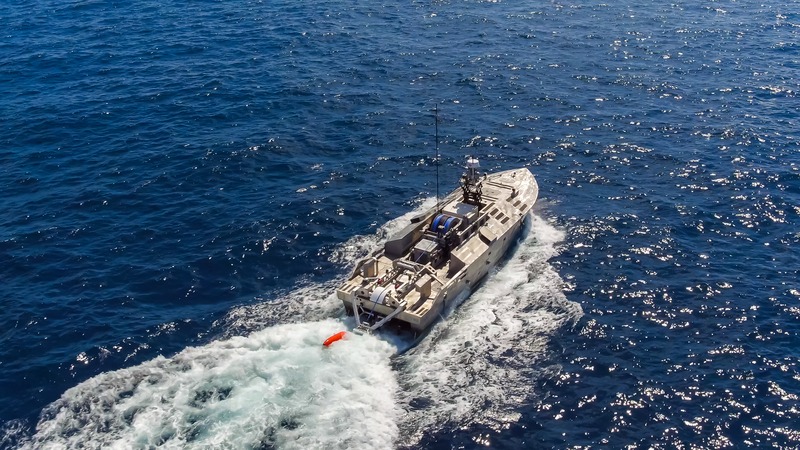
***************
ARLINGTON, Va. — The technology to sweep sea mines without endangering Sailors has made another advance with a recent contract award to Textron Systems Corporation for the development of the Magnetic and Acoustic Generation Next Unmanned Superconducting Sweep (MAGNUSS) system for the Mine-Countermeasure Unmanned Surface Vehicle (MCM USV).
The MAGNUSS system includes a high-temperature superconducting magnetic source with an advanced acoustic generator, designed to defeat magnetic- and acoustic-triggered sea mines by spoofing them.
The $20.8 million contract award from the Office of Naval Research (ONR)-sponsored Future Naval Capability effort calls for the “development, fabrication, and demonstration” of the MAGNUSS payload, according to the Defense Department contract announcement, which also said that the payload “is expected to transition to the Naval Sea Systems Command program” for the MCM USV.
Textron earlier developed the Unmanned Influence Sweep System (UISS), a towed cable with a magnetic and acoustic minesweeping system designed to be deployed by an MCM USV. The UISS is a mission module of the Mine Countermeasures Mission Package for the U.S. Navy’s littoral combat ships.
Minesweeping with Magnets
David Phillips, Textron Systems’ senior vice president for Sea Systems and Land Systems said in a March 23 interview with Seapower that the MAGNUSS offered, “a different, unique way to sweep mines” with a modular “non-towed, zero-drag system that sits within the unmanned surface vessel and basically spoofs mines through acoustics and magnetics.”
Phillips said that the UISS towed sensor sweep cable was less effective in shallow water because it can get damaged by or tangled or snagged in underwater obstacles, including such objects as crab traps. These factors affected the life of the tow cable, and hence a concern with the cost of replacing it.
He also said the UISS magnetic generator was heavily influenced by the salinity of the water, with lower performance in low-salinity water. He noted that these factors would be of no concern with a payload within the hull of a USV that would no longer need to deploy and retrieve a tow cable.
Applying a magnetic field through water, the salinity affects the level of resistance, said Tim Livelsberger, Textron Systems’ systems engineer for the project, during the interview. “The more salt you have, the easier it is for the power to flow through. The less salt that you have, the more power you need to generate to maintain that magnetic field.
“This technology simplifies the operations for the Sailors and increases the envelope where they can operate at and what salinity levels [they can operate in],” Livelsberger said.
Under the contract, Textron will be working to provide a low-risk, advanced development model of the MAGNUSS that will be put through a demonstration for the Navy using a company-owned Common USV like those the company delivered to the Navy for the UISS program.
Operational Testing
Phillips said that following the demonstration, options exist for furthering the Technical Readiness Level and the maturity into Engineering Development Models.
The MAGNUSS high-temperature superconducting magnetic source is built by American Superconductor and the advanced acoustic generator is built by General Dynamics Applied Physical Sciences.
Livelsberger said that the CUSV has gone through Initial Operational Test and Evaluation of the MCM mission package with the littoral combat ship with the UISS and the AQS-20 mine-hunting system.
He said the Navy’s requirements for the MAGNUSS were essentially the same as for the UISS.
Livelsberger said that one of the major challenges with using a super-conducting magnetic system is the interoperability of the MAGNUS with the CUSV, shielding the USV’s instrumentation and electronic systems from the intense magnetic field generated by the source. He said the magnetic source leverages the technology used to degauss large warships.
Last year, Textron’s CUSV was equipped with anti-submarine warfare identification and tracking systems to participate in the Robotic Experimentation and Prototyping Using Maritime Uncrewed Systems, a multi-national exercise conducted in Portugal.
- BlueHalo to Test C-UAS System on Marine Corps JLTV - April 29, 2024
- USS George Washington Deploys to U.S. Southern Command, Eventually Headed to Japan - April 26, 2024
- SECNAV Advocates Increased Legal Immigration to Increase Shipbuilder Workforce - April 23, 2024



